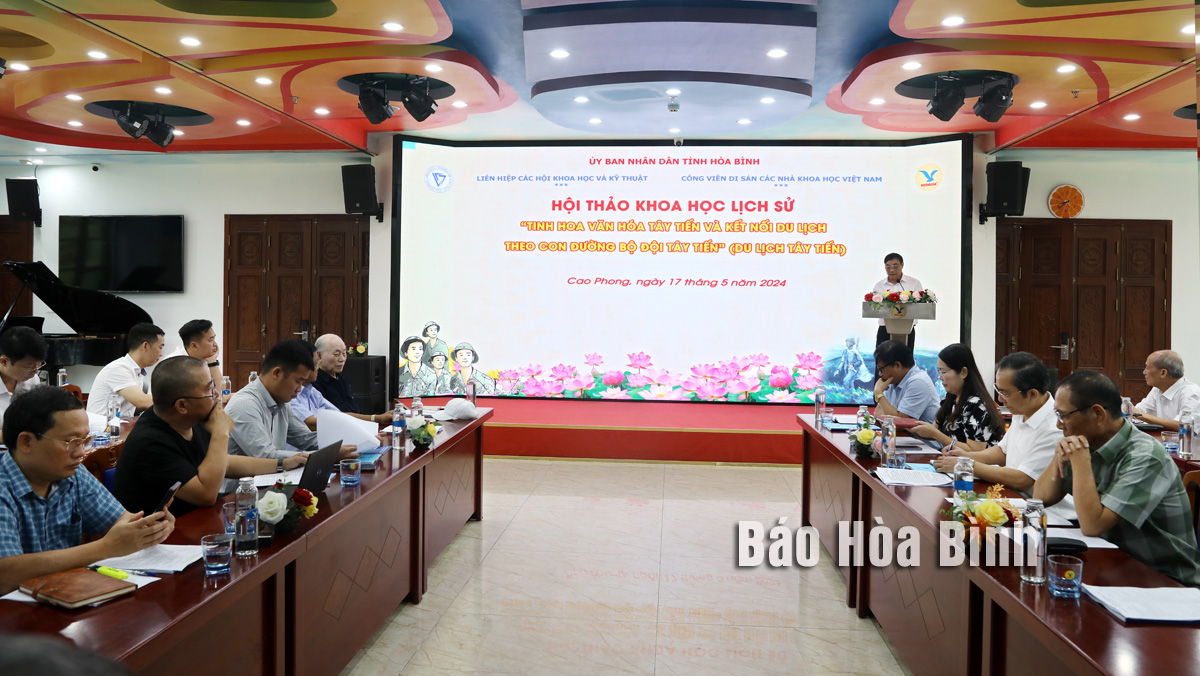
The provincial Union of Science and Technology in coordination with the Heritage Park for Scientists & Scholars of Vietnam has organised a symposium on culture traits associated with Tay Tien (Westward advancing) soldiers and tourism along the route they once marched.
A view of the symposium.
The May 17 event formed part of the
science-technology activities aiming to promote the cultural and historical
values of documents and objects related to the Tay Tien Regiment, thus
promoting local tourism.
Other activities include adding more than 50
documents and objects presented by the soldiers’ relatives to the provincial
museum, raising the total number of such items collected since 2012 to 350; and
clarifying many stories featuring sentiments between the soldiers and
residents, notably ethnic groups in Hoa Binh province.
The Tay Tien front covered Hanoi, Hoa Binh, Son
La, and Thanh Hoa of Vietnam, and Huaphanh of Laos.
Over the past time, Hoa Binh and other
localities have carried out an array of activities to commemorate Tay Tien
soldiers and raise youths’ awareness of their sacrifice.
There are three relic sites associated with the
regiment, of them two in Lac Son (Hoa Binh) and Muong Lat (Thanh Hoa) winning
the provincial status, and the other in Moc Chau (Son La) earning the national
recognition.
At the symposium, participants looked into the
cultural and historical values of the documents and objects, and raised
proposals to promote Tay Tien tourism in Hoa Binh, as well as tours along the
route, from Hanoi through Hoa Binh and Son La to Huaphanh.
The People’s Committee of Lac Son district held a ceremony on April 28 to receive the provincial relic certificate for the ancient rock carving site at Suoi Co stream, located in My Thanh commune.
A special music show titled "The country is in the fullness of joy” has been held at Hoa Binh Square in Hoa Binh city in celebration of the 50th anniversary of the liberation of the South and national reunification (April 30, 1975–2025).
The People's Committee of Lo Son commune, Tan Lac district, has organised the local annual traditional stream fishing festival on April 19 - 20.
As a land deeply intertwined with human history and Vietnam’s millennia-long journey of nation-building and defence, Hoa Binh is often revered for its epic tales and legends.
Residents of Hoa Binh boast a rich cultural identity, reflected in their unique language, traditional attire, customs, and folk melodies – described as "sweet as honey, clear as a mountain stream.”
Lac Son district’s Vu ban town held the 2025 Truong Kha temple festival on April 12–13 (the 15th–16th days of the third lunar month). Since its revival in 2019, the festival has been organised every three years, preserving valuable intangible heritage while meeting the community’s cultural and spiritual needs.



